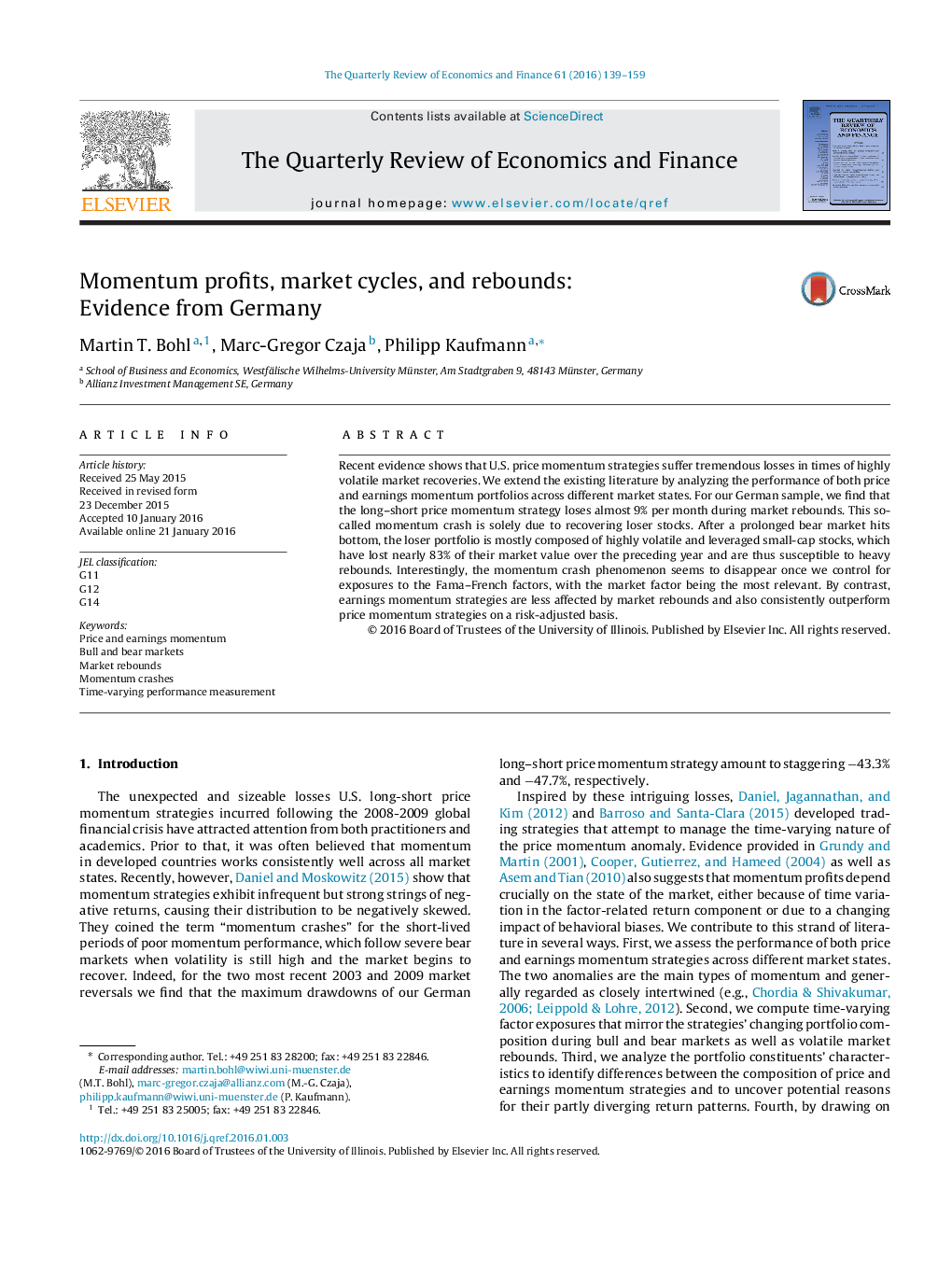| Article ID | Journal | Published Year | Pages | File Type |
|---|---|---|---|---|
| 981992 | The Quarterly Review of Economics and Finance | 2016 | 21 Pages |
•Price and earnings momentum payoffs vary across market states.•The long–short price momentum strategy loses almost 9% per month during volatile market rebounds.•These momentum crashes are solely due to recovering loser stocks.•Losers are prone to heavy rebounds because they exhibit call option-like behavior.•Earnings momentum is less affected by market rebounds.
Recent evidence shows that U.S. price momentum strategies suffer tremendous losses in times of highly volatile market recoveries. We extend the existing literature by analyzing the performance of both price and earnings momentum portfolios across different market states. For our German sample, we find that the long–short price momentum strategy loses almost 9% per month during market rebounds. This so-called momentum crash is solely due to recovering loser stocks. After a prolonged bear market hits bottom, the loser portfolio is mostly composed of highly volatile and leveraged small-cap stocks, which have lost nearly 83% of their market value over the preceding year and are thus susceptible to heavy rebounds. Interestingly, the momentum crash phenomenon seems to disappear once we control for exposures to the Fama–French factors, with the market factor being the most relevant. By contrast, earnings momentum strategies are less affected by market rebounds and also consistently outperform price momentum strategies on a risk-adjusted basis.
